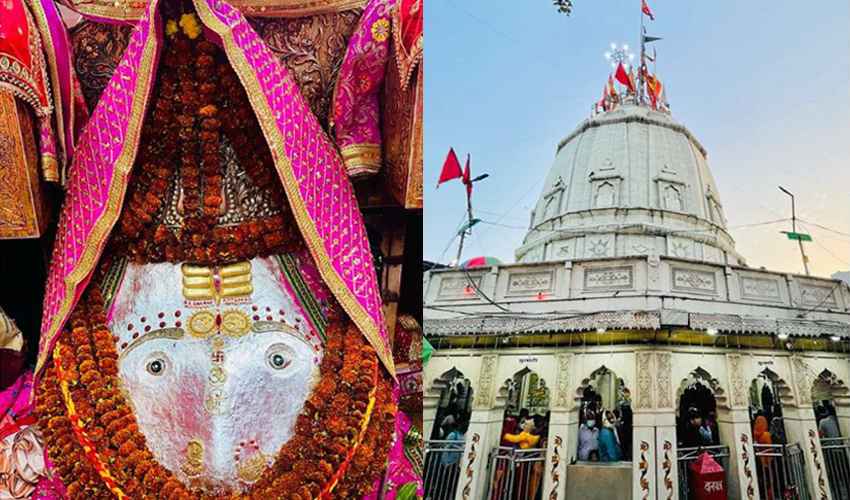Delhi is home to countless temples and sacred sites, but among them, Shri Kalka Ji Temple holds a distinct place of reverence. Dedicated to Goddess Kalka, a powerful form of Goddess Kali, this ancient temple near Nehru Place is considered one of the most significant Shakti Peethas in North India. With centuries of history, myths, and continuous devotion, the temple attracts millions of devotees every year, especially during the sacred festival of Navratri.
Shri Kalka Ji Temple History
The origins of Shri Kalka Ji Temple are steeped in mythology. It is believed the goddess manifested here to annihilate the demon Raktabija, making this site sacred ever since the Mahabharata era. Legends also say that the Pandavas worshipped here before the Kurukshetra war.
Historically, parts of the temple were rebuilt during the 18th century by Maratha rulers, though its sanctity and worship traditions are far older. Over time, the temple continued to be restored by kings, saints, and devotees, ensuring its preservation as a major shrine.
Architecture of Kalka Ji Temple
The structure of the temple reflects traditional North Indian temple architecture. It is largely made of brick and stone masonry, with marble detailing added in later years. The sanctum, or Garbhagriha, houses the revered stone idol symbolizing Goddess Kalka’s eternal energy instead of a conventional human-like idol.
The spacious courtyard and surrounding smaller shrines inside the complex make it a holistic place of worship. Despite its relatively simple design, the temple exudes immense spiritual power attracting lakhs of pilgrims.
Religious Significance of Kalka Ji Mandir
Shri Kalka Ji Temple is regarded as one of the most important Shakti Peethas where Goddess Shakti is worshipped as Kalika Devi. Devotees believe that prayers here help fulfill wishes, remove obstacles, and protect families from misfortune.
The temple witnesses its highest footfall during Navratri, celebrated twice a year in Chaitra (March–April) and Ashvin (September–October). During these nine days, grand celebrations, continuous chanting of hymns, and devotional songs immerse the temple in unparalleled spiritual energy.
Legends of Kalka Ji Temple
Several fascinating myths surround Kalka Ji:
-
Demon Raktabija: According to scriptures, Goddess Kalka manifested at this spot to slay the demon Raktabija, who threatened cosmic balance.
-
Pandavas and the Mahabharata: Local belief associates the Pandavas with this temple, as they offered prayers here to seek the goddess’s blessings before their great battle.
These legends enrich the temple’s status as a divine symbol of protection, power, and victory.
Spiritual Practices and Rituals
Worship at Shri Kalka Ji Temple combines both formal Vedic rituals and folk traditions. Devotees bring flowers, coconuts, red cloth, and sweets. Priests recite Sanskrit shlokas while bhajans are sung throughout the temple complex.
Lighting diyas (lamps) in the evenings and offering red-colored garments are common practices. Unlike some temples where rituals are highly regulated, Kalka Ji Mandir allows all devotees close access to the goddess, symbolizing inclusiveness and universal faith.
Kalka Ji Temple in Delhi’s Culture
The temple is deeply integrated into Delhi’s cultural fabric. Situated near the IT hub of Nehru Place and the residential areas of Govindpuri, the temple is visited daily by locals as well as tourists.
During Navratri, a grand fair transforms the surroundings into a cultural celebration with stalls, devotional music, and festive energy. Its proximity to another landmark, the Lotus Temple, makes it part of a larger spiritual and tourist circuit in South Delhi.
A Visitor’s Experience
Visiting Kalka Ji Temple is a deeply spiritual experience. The constant ringing of bells, devotional chants, and the energy of thousands of devotees create a divine ambiance. Despite the heavy rush during Navratri, the temple management and volunteers ensure worship remains orderly.
What makes the temple stand out is its egalitarian approach—people from all walks of life come together here, united in devotion to the Mother Goddess.
How to Reach Kalka Ji Temple
The temple is well connected by road and metro:
- By Metro: The nearest metro station is Kalka Ji Mandir (Violet Line), just a short walk away.
- By Road: Buses, autos, and cabs frequently ply to the temple from all parts of Delhi NCR.
- Nearby Landmarks: Lotus Temple, ISKCON Temple, and Nehru Place Market are in close proximity, making for a wholesome day trip.
Festivals at Kalka Ji Mandir
- Navratri: The highlight festival with immense crowds, nonstop devotional songs, and hundreds of thousands of pilgrims over nine days.
- Diwali and Other Occasions: The temple also sees large gatherings on Diwali, Durga Ashtami, and other Hindu festivals celebrated with rituals and offerings.
Conclusion
Shri Kalka Ji Temple is more than a shrine—it is a living symbol of Delhi’s spiritual and cultural heritage. Its ancient origins, fascinating legends, and continued popularity among devotees make it a sacred space of timeless significance. Whether you visit to seek blessings, to explore Delhi’s religious heritage, or to experience a grand cultural event during Navratri, the temple offers a truly divine experience.
